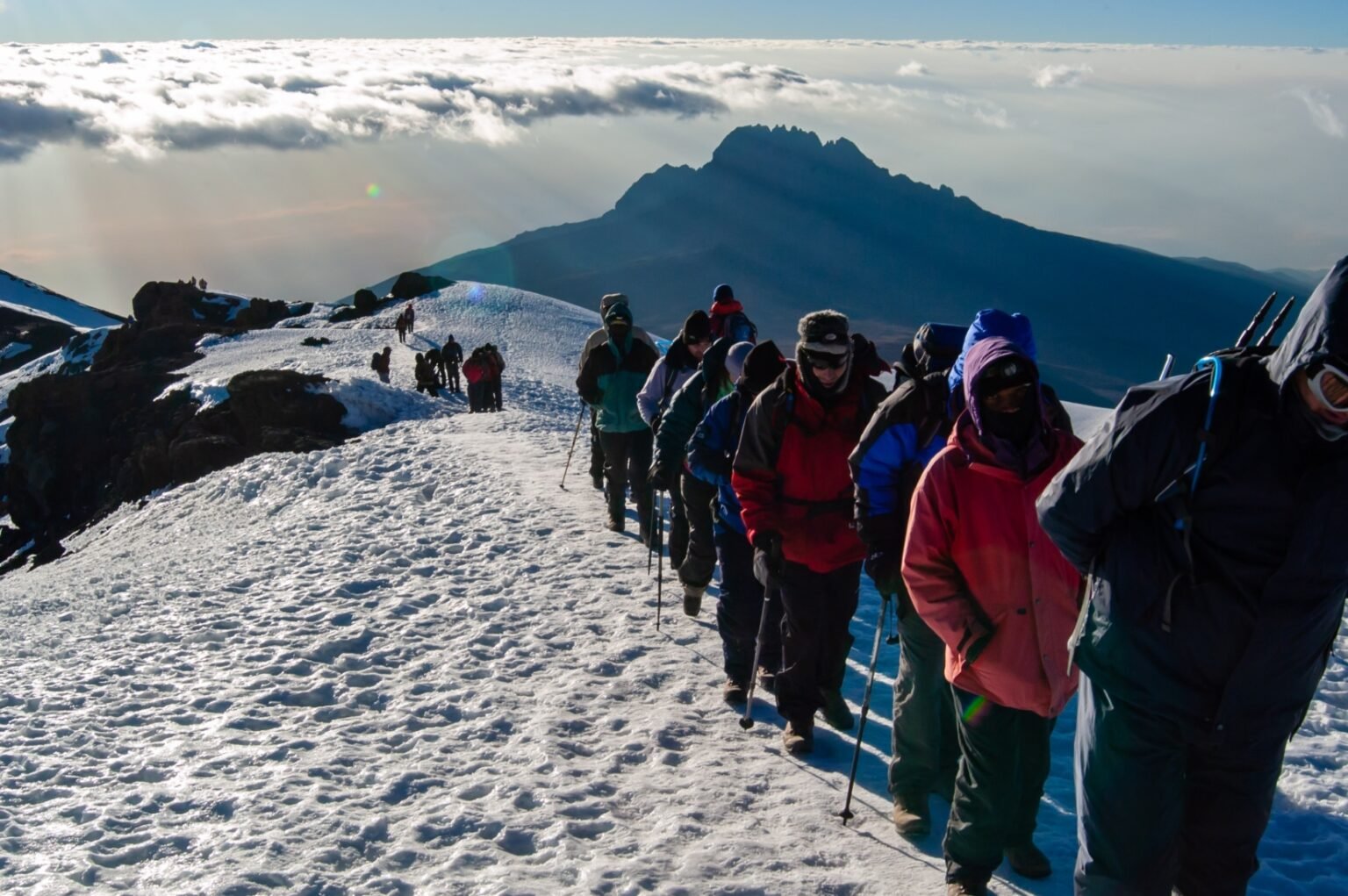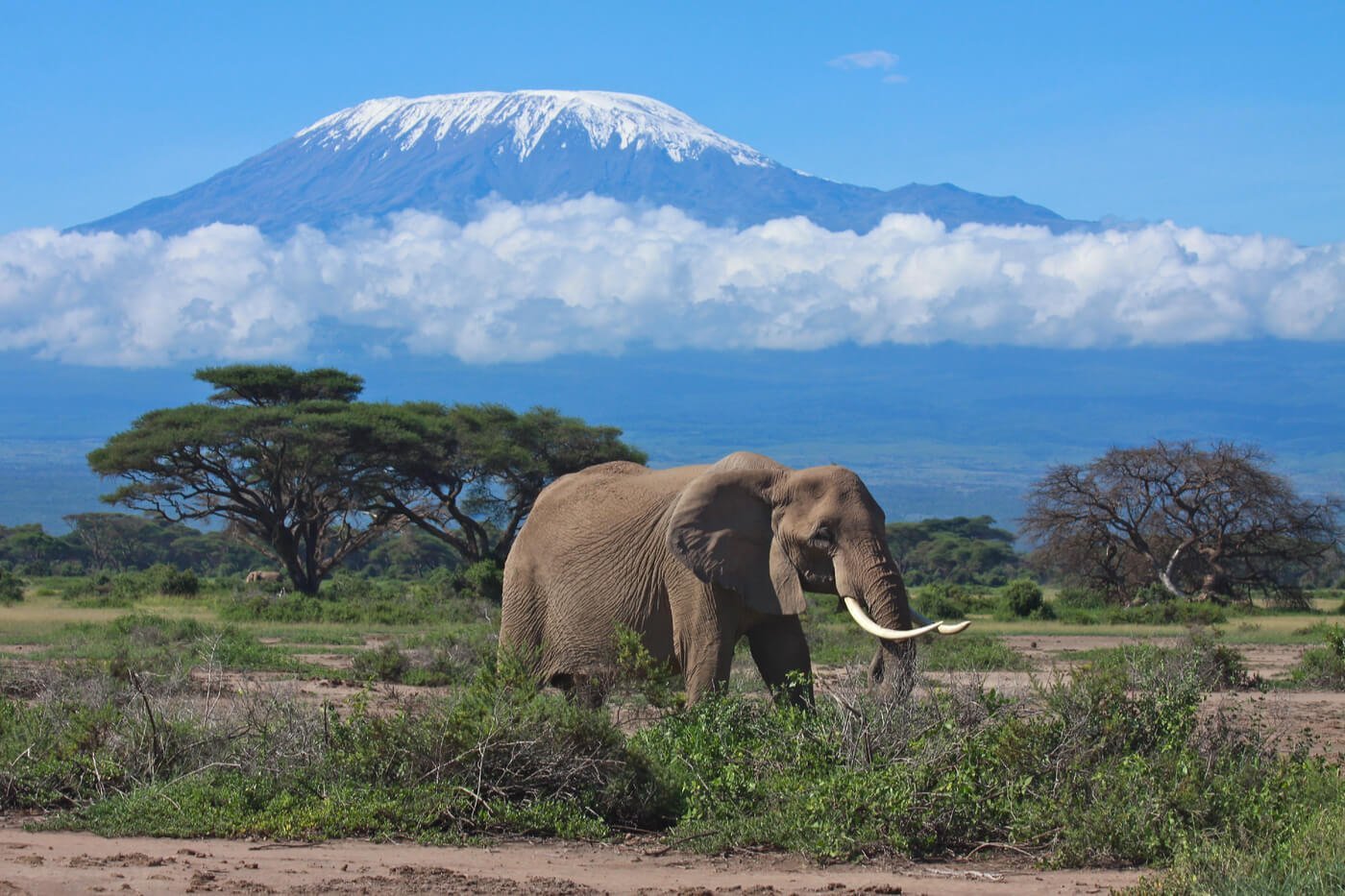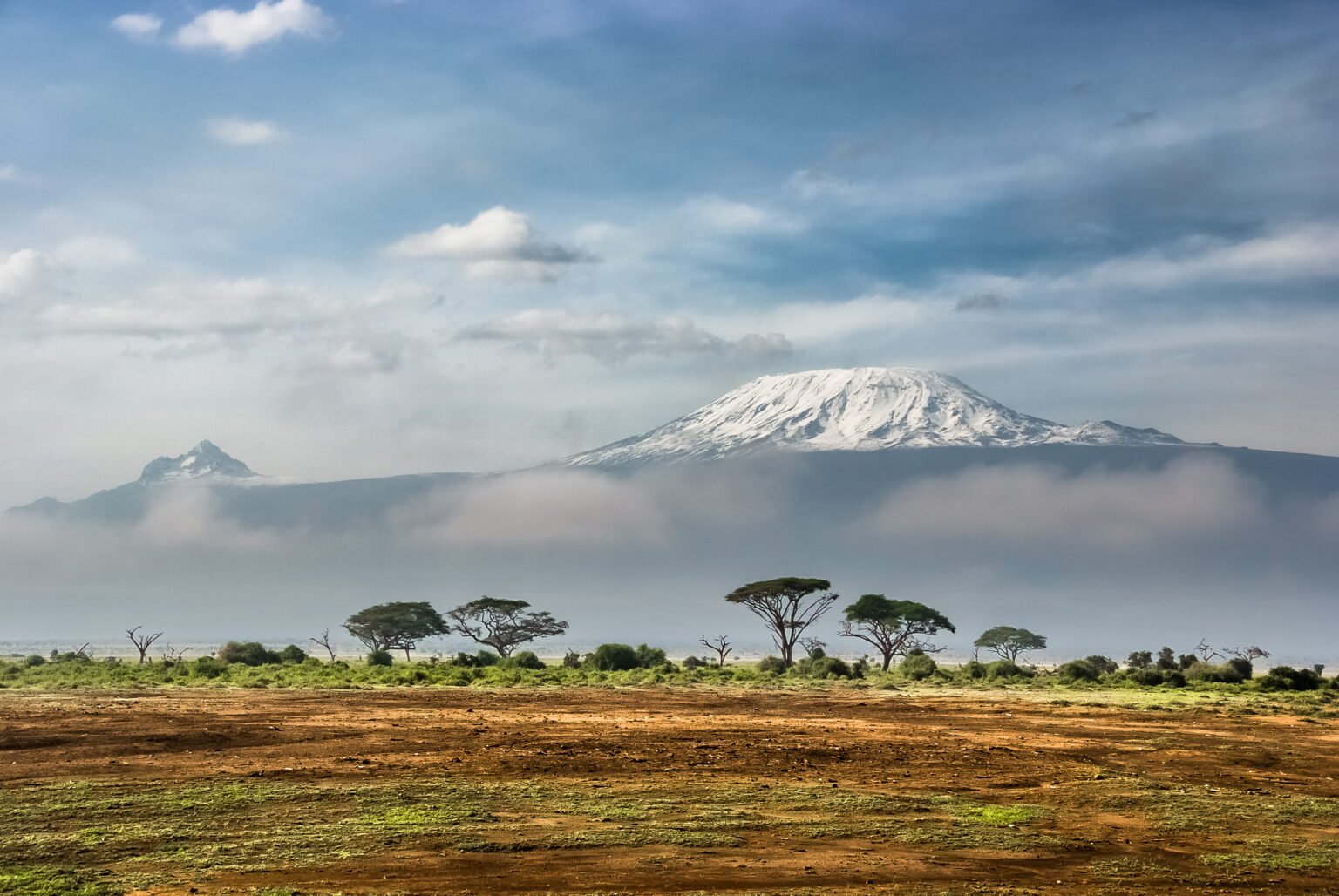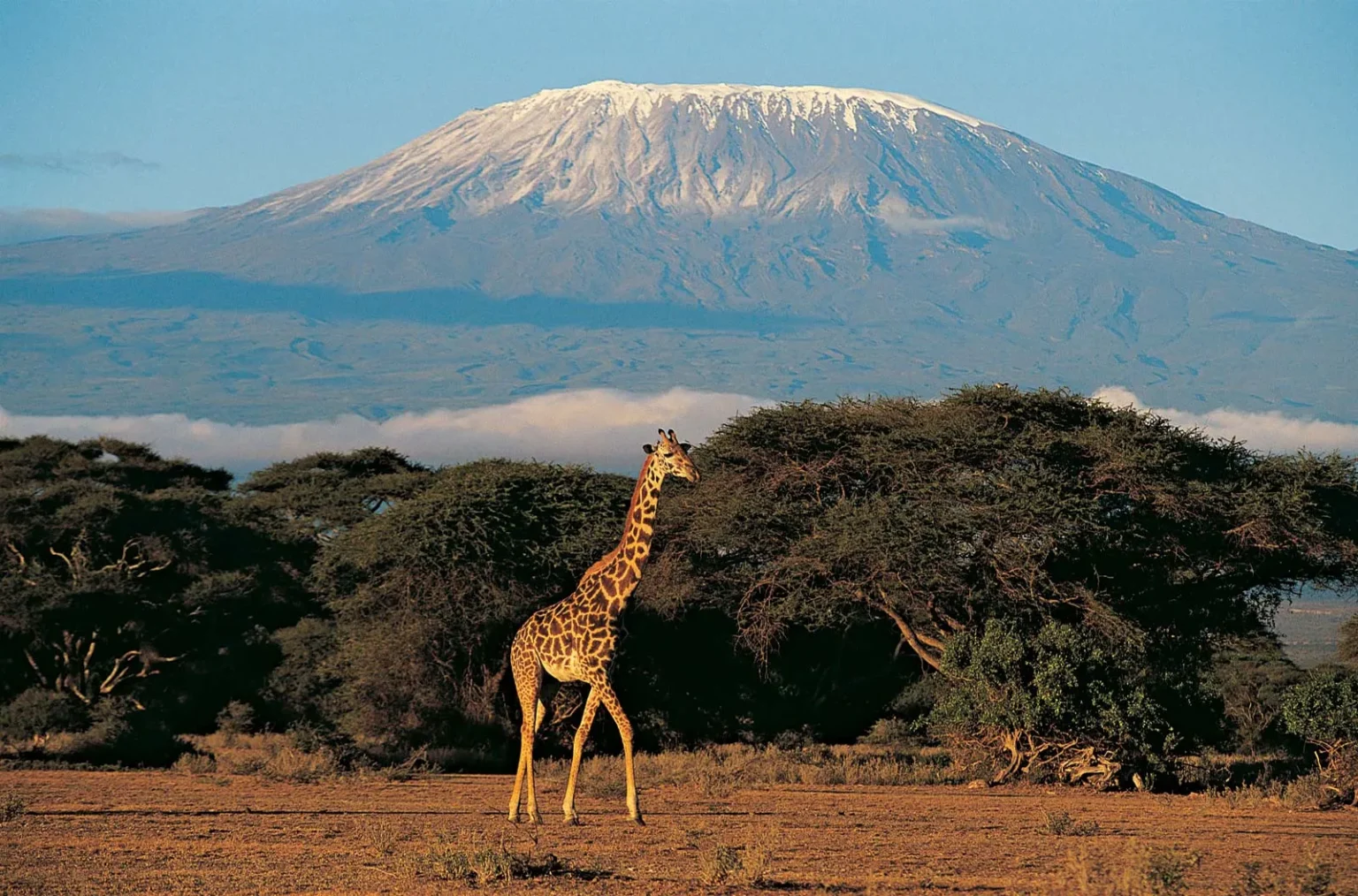Mountain trekking
Tanzania wildest Adventure
Mountain Kilimanjaro
Conquer the Roof of Africa
Mount Kilimanjaro, Africa’s highest peak and a world-renowned natural wonder, stands majestically in northeastern Tanzania. This iconic mountain, rising to 5,895 meters (19,341 feet). Kilimanjaro is stratovolcano comprised of three distinct Volcanic cones:Kibo, Mawenzi, and Shira. Each of these cones offers a Unique Landscape and geological History, making Kilimanjaro a fascinating destination for Exploration.
KIBO: The central and highest cone,home to the famous Uhuru Peak, which is Ultimately summit for Climbers.
Mawenzi:The rugged and picturesque second-highest peak,offering stunning views and challenging climbs.
Shira: The oldest and now extinct Volcanic cone, forming a broad plateau with sweeping vistas.
Known As
“The Roof of Africa,” Kilimanjaro attracts adventurers, climbers, and nature enthusiasts from around the globe, eager to experience its breathtaking landscapes and diverse ecosystems.
From lush rainforests and moorlands to alpine deserts and icy glaciers, the mountain offers a journey through climate zones unlike any other.
Beyond its natural beauty, Kilimanjaro holds cultural and spiritual significance for the local Chagga people and stands as a symbol of perseverance, adventure, and awe-inspiring beauty.
Ecological Zones
Climbing Kilimanjaro is like trekking through multiple continents in just a few days. The mountain’s ecological zones change dramatically with altitude, providing trekkers with a diverse range of environments to experience.
Cultivation Zone (800-1,800 meters): Lush farmland and villages surround the base of the mountain, where local Chagga people cultivate crops like bananas and coffee.
Rainforest Zone (1,800-2,800 meters): Dense, tropical rainforest teeming with wildlife, including monkeys, exotic birds, and a rich variety of plant species.
Moorland Zone (2,800-4,000 meters): Heather and moorland dotted with giant lobelias and groundsels, offering panoramic views and unique flora
Alpine Desert Zone (4,000-5,000 meters): Harsh and barren, this zone features rocky landscapes, sparse vegetation, and extreme temperature fluctuations
Arctic Zone (5,000+ meters): The summit zone, characterized by glaciers, ice fields, and the iconic snow-capped peak, providing stark contract to the lush zones below.
The Roof of Africa
Symbol of resilience and the beauty of nature
Machame Route
Also known as the “Whiskey Route”, Kilimanjaro’s Machame Route is one the most popular climbing routes in Tanzania. Better yet, this route has a fantastically high success rate. The route has a gradual ascend which gives your body more time to adjust to the altitude. The trail circles around the mountain, offering up spectacular views and a wide variety of landscapes.
During this route, you will walk through the green rainforest to the amazing Shira Plateau. The last ascent to the crater rim at Stella Point is probably the most challenging part of this route and does require at least a basic level of fitness.
How long the Machame Route takes is up to you! It can be done in 6 or 7 days and, in our experience, there is a much higher chance of submitting Africa’s largest mountain on a 7-day Kilimanjaro hike!
Marangu Route
This route, nicknamed the “Coca-Cola” route, has a reputation for being one of the easiest paths on the mountain. Though it is certainly the shortest route on the mountain, this does not necessarily mean it is the easiest! As this is a shorter route, your body has less time to acclimatize properly, increasing the chances of fatigue and ultimately decreasing the chances of reaching the summit on this route.
Some climbers prefer this route because of the hut accommodation, in contrast to camping in tents as is seen on the majority of other mountain treks. Unfortunately, this also means less privacy! (Plus, there’s nothing like camping out under African skies!). The Marangu Route is the best for those on a budget and is one of the cheapest routes to reach the top of Kilimanjaro.
Lemosho Route
The Lemosho Route is a beautiful and unique route, known for its breathtaking views. In contrary to other Mount Kilimanjaro climbing routes, it starts on the western side of Kilimanjaro. Because of this, the Leomosho Route is less crowded with climbers and offers a much more secluded hiking experience.
Better yet, the Lemosho trail is completely unspoiled, making for a breathtakingly beautiful adventure up to the famous Shira Plateau. After a few days, the Lemosho Route joins the Machame Route at Lava Tower. You can do this route in 7 or 8 days, and it does require a decent level of fitness!
Even though there is a route for every level on Mount Kilimanjaro, it’s important to be able to cope with around 6-7 hours of walking every single day. This can be gruelling, so preparation is always a fantastic idea. During an average climbing day, you will walk 6-7 hours per day. In the months leading up to your trip, head out on long hikes every few weeks, gradually building up your stamina to endure a full weekend hike.
Other exercises that can help with preparing for your trek include yoga and breathing classes. Stretching out your body and mind makes your muscles stronger and less likely to let you down when you need them most!
- Hike to Materuni Waterfall: A short hike through a forest to a 90 m waterfall where you can swim in a clear pool. You might see monkeys, duikers, birds, and other small animals.
- Hike to Uhuru Peak: The most popular activity in Kilimanjaro National Park. There are six hiking routes to choose from, and each successful hike is celebrated.
- Visit a coffee plantation: Learn about coffee production in the region.
- Visit Olpopongi Maasai Cultural Village: Experience the culture of the Maasai people.
- Canoe on Little Momela Lake: Enjoy the lake on a canoe.
- Explore Moshi: Discover the treasures of Moshi.
- Go on a game drive: See wildlife in Arusha National Park.
- Mountain bike or hike in Rau Forest Reserve: Explore the reserve on a bike or on foot.
- Walk the rim of Ngurdoto Crater: Explore the crater’s rim.
- Trek to the top of Mt Meru: Trek to the top of another mountain in the region.
Climbing Mount Kilimanjaro is a year-round experience. At Tanzania Specialist, we provide expert advice on the best time for you to plan your Kilimanjaro trip based on your individual requirements.
The two main climbing seasons are the dry months from December to March and from June to October. The warmest months are from December to March. During these months the skies are clearer and there is less chance of snow on the trail. February is the best month since the temperature is high and the chances of rainfall are low. From June to October, the temperatures on the mountain are noticeably colder and the trails are busier.
During the rainy season, it can be wet, slippery and the visibility may be limited. Most climbers avoid these seasons, although some experienced climbers and adventurous travellers prefer to climb at this time. There are certainly some pros: a lack of crowds being a big draw!
Practical Information
Paradise lovebirds safaris
We recommend clients rent this toilet as most of the toilets in the mountain are dirty during high season. This rental requires an extra porter to carry it and clean it every day. This porter is paid more by us because carrying it is not an easy task. The renting price is $130 USD per whole trip per person or group (this price is for renting and a salary for an extra porter).
Kilimanjaro can be climbed throughout the year.
January to March are the best months with mild temperatures and almost no clouds in the morning and late afternoon. The main rainy season starts at the end of March and lasts until the end of May ( this is the lowest season). June, July, August can be cold but visibility is usually very good. Temperatures rise in September and October, November and December usually have perfect visibility in the night and morning. Short rains during the day and thunderstorms in the late afternoon are common.
On your climb we will provide you with breakfast, lunch and dinner. We pride ourselves on the quality of the food our team are able to provide while out on the mountain according to your requirement. With a year of experience our teams of cooks are also able to take a very good care of those of a special requirement such as vegan, vegetarian, dairy free and gluten free diet. If you have any other special dietary requirement please let us know in advance and we will provide accordingly.
Apart from you, the mountain crew who accompany you are the most important people in Kilimanjaro. A good mountain crew will deliver an unforgettable summit – climb for all climbers. Experience is important to our crew, we have guides, cooks and porters who have been hiking Kilimanjaro well for over one hundred times– that experience is invaluable. Our guides are well trained, passionate and well knowledged on the flora and fauna of Mountain Kilimanjaro, and have gone through different First Aid courses in case of any emergency on the mountain. They are also very good at spotting altitude sickness and know what to do once it is spotted
Altitudes are generally defined as follows:
High altitude 2,400m to 4,200 [8,000ft-13,800ft]
Very high altitude 4,200m-5,400m [13,00ft-17,700ft]
Extreme altitude above 5,400m [17,700ft] [Uhuru Peak 5,895m-19,340ft].
It is likely that all climbers will experience some form of mild altitude sickness during their Kilimanjaro climb [sometimes severe symptoms]. Some of the common symptoms are nausea, loss of appetite, vomiting, headache, tingling in the toes and fingers. These mild forms are not serious, and will disappear as you descend to a lower elevation.
Altitudes are generally defined as follows:
High altitude 2,400m to 4,200 [8,000ft-13,800ft]
Very high altitude 4,200m-5,400m [13,00ft-17,700ft]
Extreme altitude above 5,400m [17,700ft] [Uhuru Peak 5,895m-19,340ft].
It is likely that all climbers will experience some form of mild altitude sickness during their Kilimanjaro climb [sometimes severe symptoms]. Some of the common symptoms are nausea, loss of appetite, vomiting, headache, tingling in the toes and fingers. These mild forms are not serious, and will disappear as you descend to a lower elevation.
Tipping is of course discretionary, but is an expected part of the way in which business is done in Tanzania. It counts as an expression of gratitude to those who – hopefully have made your experience an unforgettable one and enable you to directly reward those people.
We realize that both the process of giving tips and knowing how much to give can be difficult, so we provide the following guidance.
At the end of the climb, it is a good idea to hold a “Tipping ceremony” after breakfast on the last day the team gather and start singing some of the Kilimanjaro songs and after client/clients can have words to say to the crew and a leading guide will speak on behalf of the crew.
Tips can be placed in an envelope and given to the lead guide, who can distribute them to the crew (it is advisable to announces total amount in front of the group, so that all crew member are aware of how much is to be distributed) it is recommended the client can give from 250 US$ – 300 US$ per person per whole trip. An alternative method which mostly trekkers prefer is to give individual tips to the crew members, in which case the following amount can be used to guidance.
Chief guide $ 25US per day/per group
Assistant guide $20US per day/per group
Mountain chef $15US per day/per group
Mountain porter $8-10 US per day/per group
Giving more is also allowed. The above figures are only for guidance and can of course be varied at the trekker’s discretion. Gift of clothes, boots etc are also appreciated.
Passport, yellow fever certificate, Tanzania visa, medical insurance, address book, airline tickets, cash, and credit cards.
Components
- Ibuprofen
- Acetaminophen or paracetamol
- Throat lozenges
- Band Aid
- Mole skin
- Insect repellent
- Alcohol- based hand sanitizer
- Bandage and tape
- Malaria pills[talk to your doctor]
- Antibiotics[talk to your doctor]
- Prescription drugs[talk to your doctor]
- Diamox[talk to your doctor]
- Diarrhoea medicine
- Blister treatment
- Tweezers
You are responsible for bringing your own gears. Below is a gear needed on your climb.
- Head lamp-1 pc
- Balaclava -1 pc
- Sun glass-1 pc
- Warm hat-1 pc
Sun hat-1 pc - Base layer-2 pcs
- Top fleece-2 pcs
- Warm jacket/down
- jacket-1 pc
- Poncho -1 pc
- Long underwear-2/3 pcs
- Ski pant-1 pc
- Rain pant-1 pc
- Thin socks-3 pcs
- Thick socks-3pcs
- Mountain Boot-1 pair
- Tennis shoe-1 pc
- Gators -1 pair
- Thin warm gloves-1 pc
- Thick Warm glove-1 pair
- Duffel bag/
- rucksack-1 pc
- Day pack-1 pc
- Walking poles-1 pair
- Sleeping bag -1 pc
- Warm trouser-1 pair
- Walking trouser -2 pcs
- Rain jacket/ wind
- breaker jacket-1 pc
- First Aid Kit
- Lip bum
- Sun cream lotion
- Baby wipes
Our Gallery
A Glimpse into Excellence



